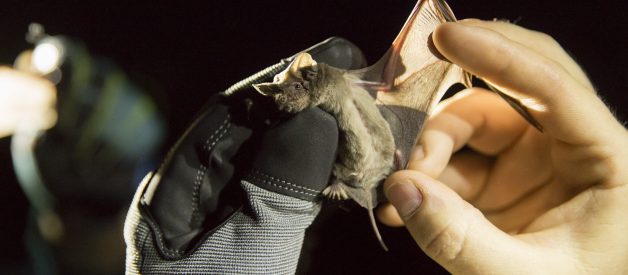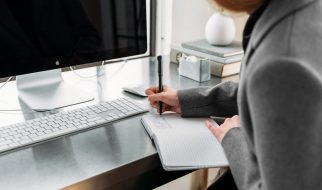Bat Week 2019
By Emma Kunkel | October 29, 2019
 A Mexican free-tailed bat. These bats are famous for their long-distance migrations to Mexico, but a small subset of the population consistently overwinters in the southern US. Photo credit: Ashley Rodgers/Texas Tech University.
A Mexican free-tailed bat. These bats are famous for their long-distance migrations to Mexico, but a small subset of the population consistently overwinters in the southern US. Photo credit: Ashley Rodgers/Texas Tech University.
A s temperatures start to drop and we embrace fall colors, warm sweaters, and roaring fires, bats across North America are preparing for perhaps their greatest annual challenge: winter. As a bat nerd, I?m fascinated by understanding how bats are adapted to deal with the freezing conditions and loss of food brought on by the changing season.
Of course, it?s not only bats that face winter ? every animal in temperate regions tackles this challenge. Some animals have neat ways to stay active and tolerate winter. For example, Black-capped Chickadees keep their body warm throughout winter but let their feet drop to near-freezing temperatures to save energy.
?Working with bats in the winter allows us to ask fundamental questions about the evolution and trade-offs of migration and hibernation.?
However, many animals can?t handle winter and choose one of two strategies: either leave the cold (migrate) or shut down for winter (hibernate). For example, dozens of songbird species, such as the Blackpoll Warbler, migrate each year from boreal forest in northern Canada to rainforest in South America while arctic ground squirrels can reduce their body temperature to near-freezing and hibernate below ground.
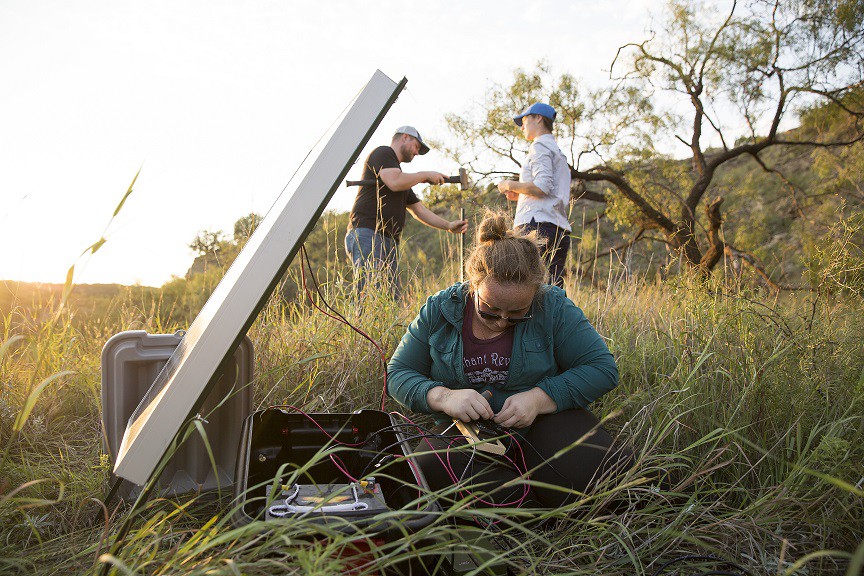 Emma Kunkel sets up an acoustic detector outside a bat roost to record nightly bat calls. These devices allow researchers to determine how active a bat colony is on a given night. Photo credit: Ashley Rodgers/Texas Tech University.
Emma Kunkel sets up an acoustic detector outside a bat roost to record nightly bat calls. These devices allow researchers to determine how active a bat colony is on a given night. Photo credit: Ashley Rodgers/Texas Tech University.
But since it?s Bat Week, let?s talk bats! Bats are superstars at both hibernation and migration. Little brown bats (Myotis lucifugus) in Canada hibernate for up to 9 months of the year on only a couple grams of stored fat while Hoary bats (Lasiurus cinereus)make annual long-distance migrations between Mexico and Canada.
What really sets bats apart, however, is their unmatched physiological and behavioral flexibility while performing these winter strategies. Other migratory animals (like those Warblers I mentioned) can?t reduce their body temperature to hibernate while other hibernating animals (like the arctic ground squirrels) can?t disperse far distances to migrate.
This means most animals are constrained to only migrate or hibernate. Bats are unique because they can do both! The more we learn about these fascinating small mammals, the more we?re realizing how much variation there is in winter strategy even within a single population.
?What really sets bats apart is their unmatched physiological and behavioral flexibility while performing these winter strategies.?
Hoary bats are best known for their long-distance migrations, but small populations consistently forego migration and instead hibernate in Oregon and Nevada. There are small groups of silver-haired bats (Lasionycteris noctivagans), another famous long-distance migrant, that stay north and overwinter around Lake Michigan.
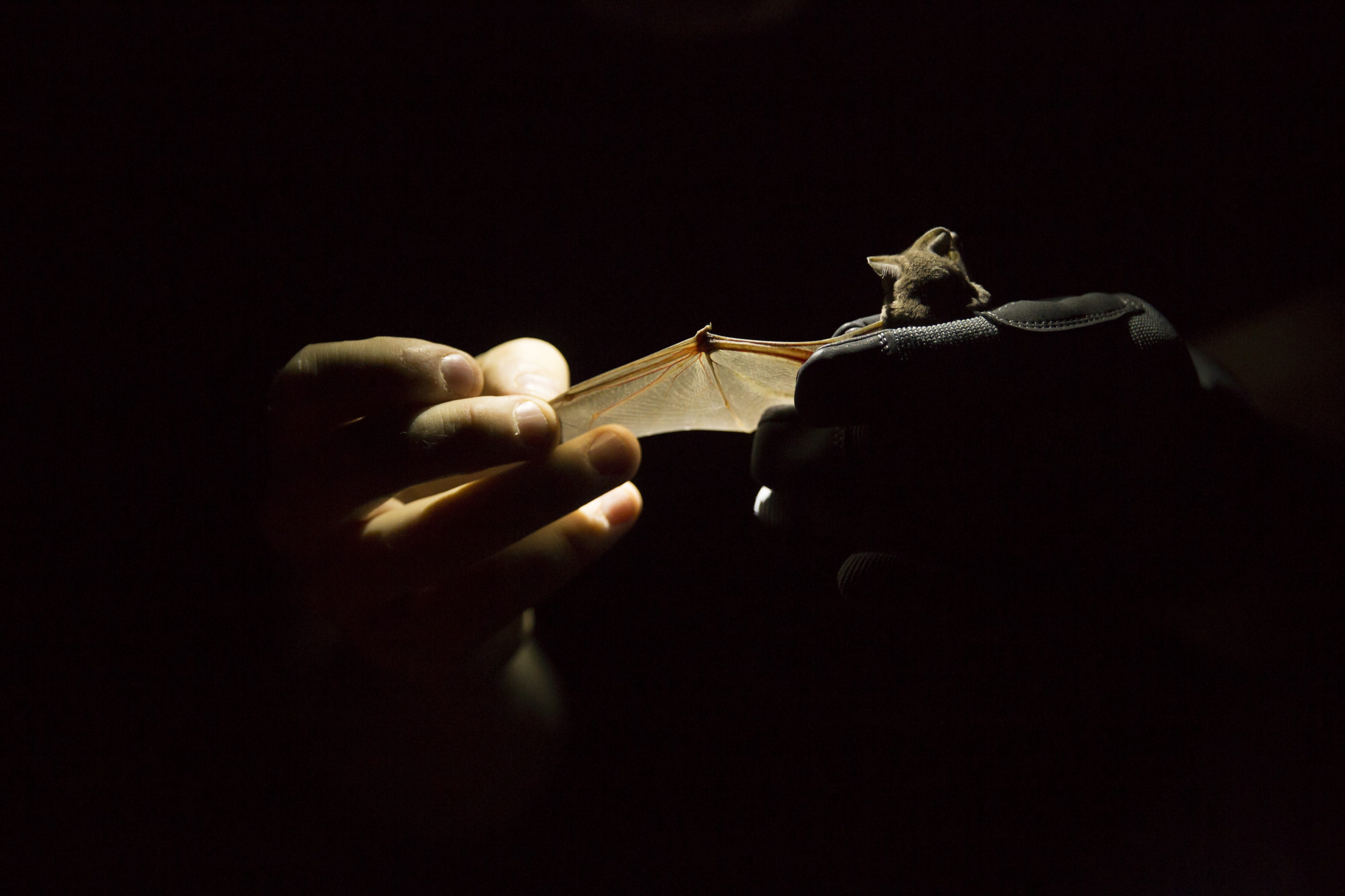 A researcher examines the wing of a Mexican free-tailed bat. Photo credit: Ashley Rodgers/Texas Tech University.
A researcher examines the wing of a Mexican free-tailed bat. Photo credit: Ashley Rodgers/Texas Tech University.
Why would a bat choose to tough out winter instead of migrating with its friends for a tropical holiday? What?s the benefit of ?going against the grain??
Working with bats lets me ask these novel questions about trade-offs between migration and hibernation. Currently I?m working with Mexican free-tailed bats (Tadarida brasiliensis) in Texas, where 99 percent of the population migrates to Mexico for winter but small populations remain north. These bats are sub-tropical, have thin fur, and are adapted to live in hot, arid climates. If they read the rule book, they would know they?re not designed for winter.
?My preliminary findings are showing that it?s only males that forego migration while nearly all the females migrate south.?
I?m curious about what drives their decision to overwinter and how they?re able to manage this energetic challenge. My preliminary findings are showing that it?s only males that forego migration while nearly all the females migrate south. This species mates in the spring when they return to their summer grounds, so perhaps males are sticking around to ensure they get first access to mate with returning females.
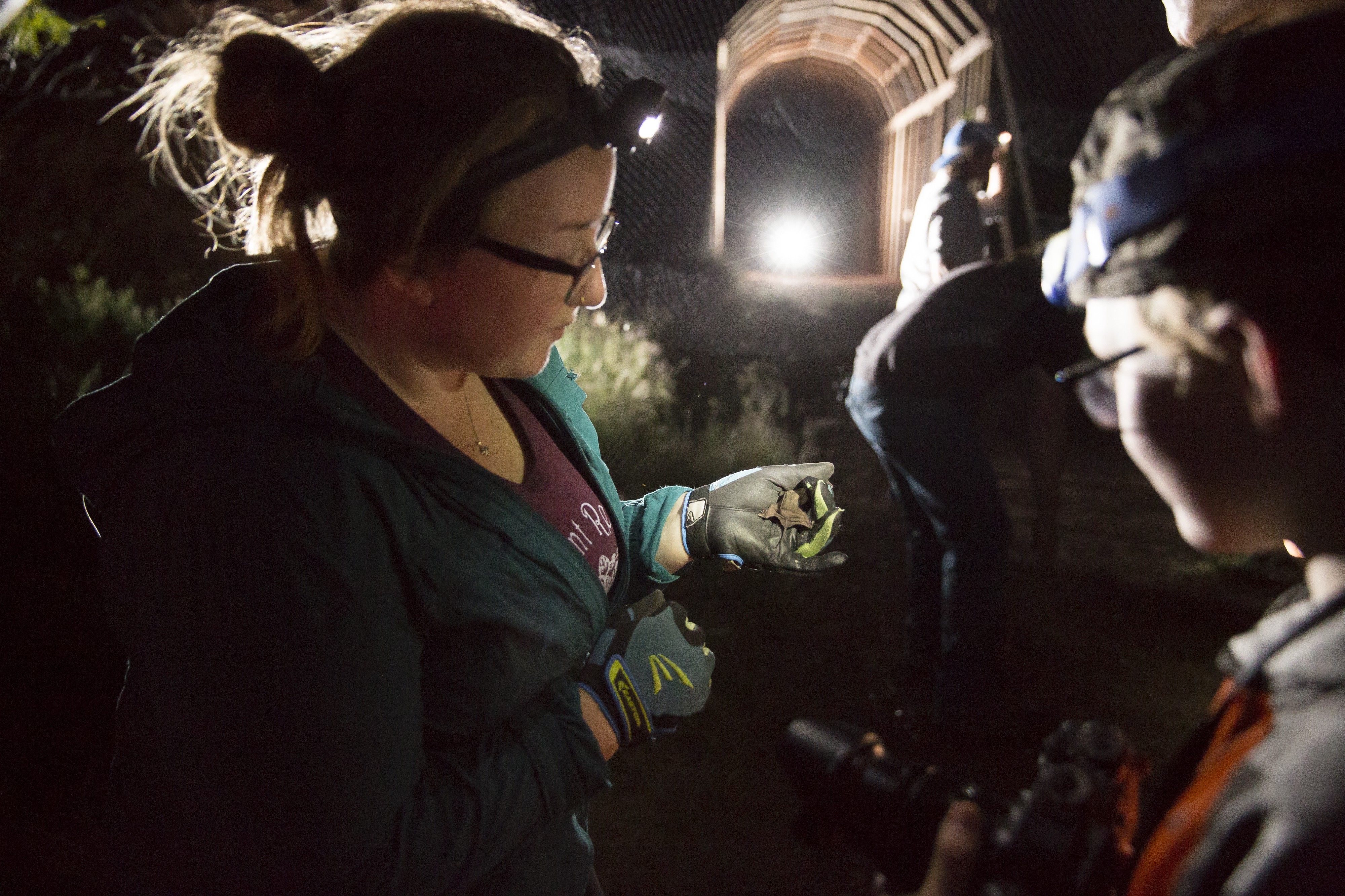 Emma Kunkel holds a Mexican free-tailed bat that was just captured in a mist net emerging from an abandoned rail tunnel (in background of photo). Photo credit: Ashley Rodgers/Texas Tech University.
Emma Kunkel holds a Mexican free-tailed bat that was just captured in a mist net emerging from an abandoned rail tunnel (in background of photo). Photo credit: Ashley Rodgers/Texas Tech University.
I?ve also been finding that the males who stay north for winter don?t appear to eat during winter ? I collected blood samples to determine the triglyceride concentration (a measure if an animal has eaten recently) and found those values were incredibly low all throughout winter ? even on warm winter nights when they?re actively flying around.
I?ve also found these males are capable of entering torpor (reducing their body temperature to match ambient temperature) and hibernating during cold spells. I?m still working to disentangle more about this system ? do the males that forego migration actually have better spring mating success? How much energy does a bat spend to hibernate vs migrate? Is it the same males that stay north each winter?
Working with bats in the winter allows us to ask fundamental questions about the evolution and trade-offs of migration and hibernation. The ecological diversity we see in bats allows us to ask these exciting (but complex!) questions. Which is why I love studying bats!
Emma Kunkel is a MSc student at Texas Tech University who is partnering with WCS (Wildlife Conservation Society) under funding from the Department of Defense Strategic Environmental Research and Development Program (SERDP) to study migration and hibernation physiology in bats. Any opinions, findings, and conclusions or recommendations expressed in this publication are those of the author(s) and do not necessarily reflect the views of the Government.
